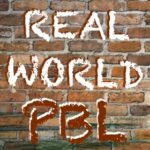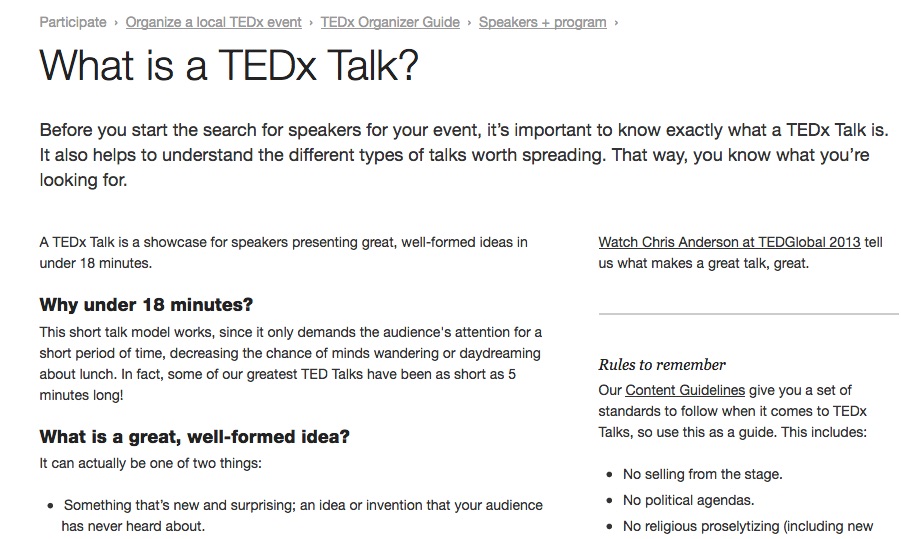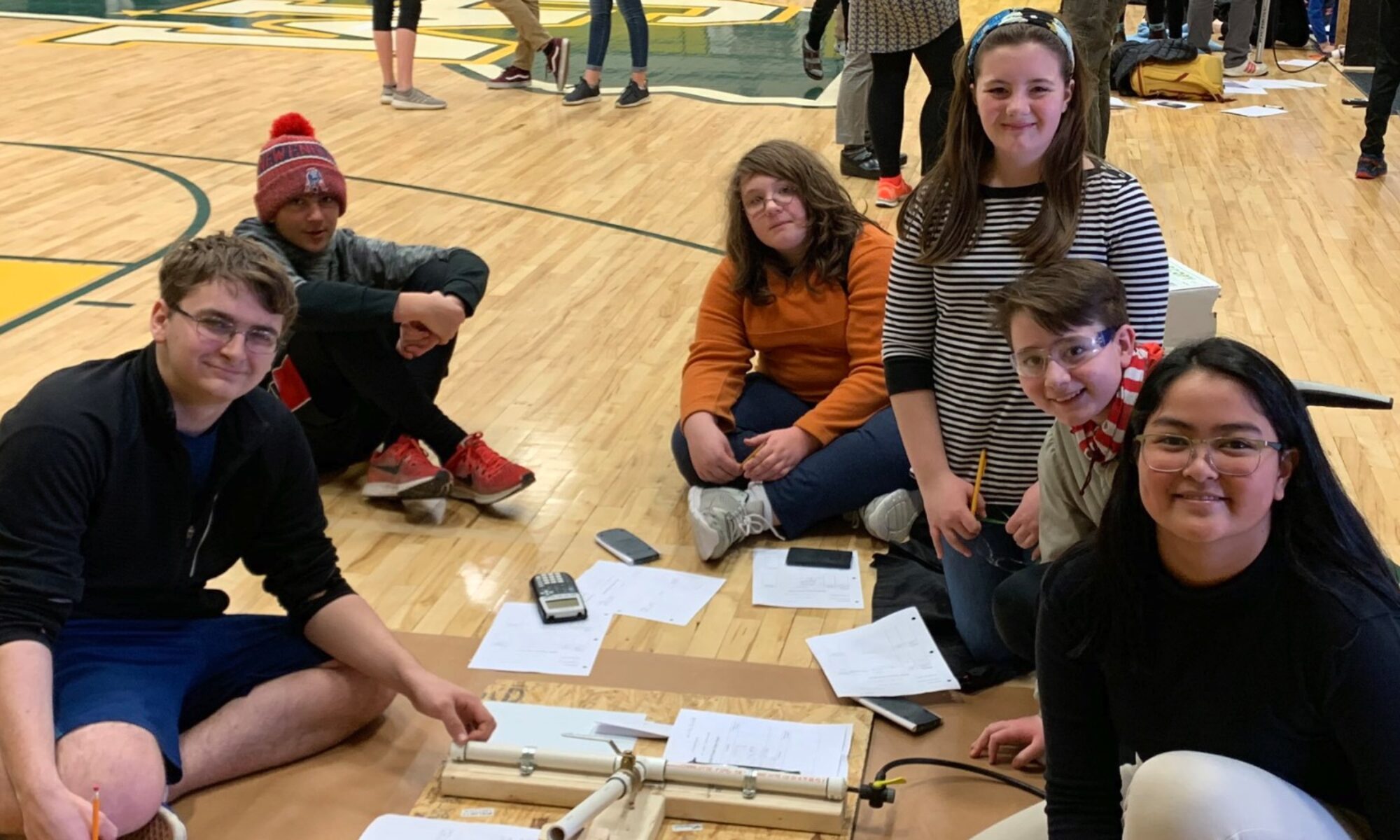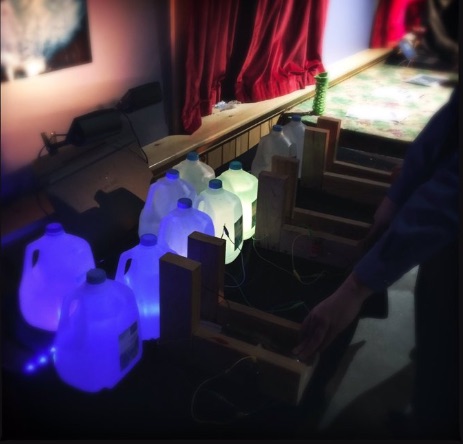Student exhibitions of project-based learning

At this point we all know how important it is for students to share project-based learning with an authentic audience. It shows students they have power in the world, and that their research really makes a difference. But how best to design an exhibition that empowers students and provides a compelling, informative experience for the community?
Cabot High School did it by hosting an evening that combined student TED Talks, interactive sound sculptures and a high school funk band.
It. Was. Glorious.
In this episode of our podcast, we take you to Cabot High School’s FLOW event, where you’ll hear what it was like to connect with their community around water conservation PBL.
Student TED Talks, sound sculptures & the value of a good funk band at school exhibitions
Full transcript appears below.
For this episode of The 21st Century Classroom, we traveled to Cabot, Vermont, deep in the heart of rural Washington County, to hear how students at Cabot High School turned the study of water resources and environmental impacts into art, quizzes and TED Talk-style lectures for their community.
This past Friday, students in Cabot’s Latin American Studies and Maker Science classes hosted an exhibition of learning. The students produced interactive quizzes on the environment, circuitry-powered research exhibits, and they gave TED Talks to a receptive and enthusiastic audience.
They had a student funk band, y’all.
And a whole bunch of their community showed up to listen, and learn.
Henry Burke: Hello everyone, my name is Henry Burke, and in my hand I am holding a simple apple. Can anyone guess how much water it takes to grow this single apple? Feel free to shout out some answers:
Man in the crowd: One gallon!
Henry: One gallon, all right…
Woman in the crowd: Three gallons!
Henry: Three gallons, okay…
Kid in the crowd: FIVE gallons?
*Multiple people shout guesses*
Henry: Ten gallons, fifty gallons– It’s actually 18 gallons of water to grow this single apple.
Crowd: Whoa. *stunned silence*
Henry: Why do I mention this today? It’s all connected with the research my colleagues and I have done. Today, I will discuss agriculture and the water crisis: Drought. A very scary word for farmers, and a reality in the Mid-West. Today, in several states, it’s a word they’re using too often.
What’s a TED Talk?
TED stands for “Technology, Education and Design”. The non-profit TED organization conceived of TED Talks as short, powerful ways to spread ideas with real-world relevance and global significance. The idea is for speakers to present great, well-formed ideas in under 18 minutes.

And these particular TED talks were a huge success.
Rowan: Hello, and welcome. My name’s Rowan Lanxner. In America alone, around 34 million Xmas trees are cut down every year. I’d like to also ask the audience to shout out guesses about how many trees are cut down worldwide each year.
Various people in the crowd: Ten! …A hundred million! …Two million!
Rowan: About fifteen billion trees are cut down each year.
Crowd: Ooh.
Rowan: The Amazon rainforest is a vast forest that covers most of Brazil and the surrounding countries. It’s so enormous that it can cover the entire US and most of the countries in Europe. It’s so large that vast amounts of water are evaporating from it, creating most of its rainfall. The Amazon is so big, nothing can affect it, right? In reality, the Amazon is facing a crisis that affects us all: Deforestation.
The schedule for the evening allowed visitors time to wander the performance hall and check out the art exhibits both before and after the TED Talks. This ensured everyone had a chance to speak with the exhibits’ creators, who were on hand to demonstrate their creations and answer questions about how it worked, and what they learned.
The Rain Paintings
Samantha Flanagan studied art relating to water consumption and conservation before embarking on her project. She painted two images: in the first, a solitary figure gasps for rain while a second figure stands nearby, under an umbrella. In the next image, the second figure has expanded his umbrella, thus preventing the thirsty man from getting any rain at all. When visitors placed their fingertips against various pieces of the diptych, melancholy chimes rang out and soft LED lights began to glow.

Thin wires led down from the paintings to a small Makey Makey console, and from there to a laptop sitting on a rough wooden stool.
Sam Flanagan: If you use this you can connect to a couple keys on your computer and they do a lot of stuff with it. Like, Garageband? If you use GarageBand and the keys connect to specific Tunes, you can use the Makey Makey to make, say, a banana, be one of the keys on the piano.
Audrey: Had you done anything with a Makey Makey before?
Sam: No, not until this science class. I’ve heard of it briefly in a Facebook video and I wanted to try it, and I was really excited to be able to do that in a science class.
Audrey: Would you be interested in using it for other science projects?
Sam: Yes, definitely. There’s a lot of stuff you can do with it. You can do music, you can light up projects, really anything. In the beginning we were taught what a circuit was and how to do them, because that’s really what you need to know how to do in order to do this. Other than that, we were free to do what we want on the project. If we needed help, we were free to ask.
Audrey: Do you feel like you want go on in art, or in circuitry, or both?
Sam: Well, I’m interested in both and going a completely different direction and am interested in dog training.
Meanwhile, Just a Flush Away…
Across the narrow — and crowded — corridor from Samantha’s rain paintings sat a table nearly bowed by the weight of a collection of filled gallon water jugs. Every so often a section of the jugs lit up — blue, green, or red — and someone nearby would gasp in surprise. I went to go talk to the inventor, Andrew Little.
Andrew: We re-purposed a piano over in the Willey Building not too long ago, and I took the piano pedals off the piano itself, and I hooked the pedals up to an LED strip behind each of these sections of water, and whenever you light it up, like that–
*presses pedal*
–that indicates five clean gallons of water that we’re wasting. This other one is for one minute, in a shower, and 75% of that is wasted. And washing dishes, that is also 80% water — all that water is wasted. They all have different lights: red, green or blue. It’s just to illuminate the water so people can soak in how much there actually is. It’s just to show how much water is wasted.
Audrey: Had you done anything previously with circuits?
Andrew: No, this was my first time.
Audrey: What did you think of the experience?
Andrew: Stressful, very stressful. But it was very eye-opening. It was quite simple once you get the hang of it, but getting started was stressful.
Audrey: Like what part of it was stressful?
Andrew: Like the beginning, learning to do a circuit, how to wire it, doing the wires so that when you pressed down things would light up. That part was a mess. Darren right here had to help me out a little bit.
Audrey: Now that you’ve done a science project involving circuits, do you think you’d like to do more projects with circuits? Or would you prefer other methods?
Andrew: For science or for outside of school?
Audrey: Yes.
Andrew: For science, that would be amazing, but for outside of school I don’t think I would. I wanna be a lawyer when I grow up, and those aren’t in the same field. So it’s cool for school — and for my free time, that’s a great time-killer, but for my occupation? Probably not.
Audrey: So you’ve said that you’re thinking about becoming a lawyer; did any of the things that you learned in this project push you towards water law or environmental law?
Andrew: Absolutely. I feel like we do waste a lot of water.

So, Why Student Exhibitions?
As more schools begin to incorporate project-based learning in their curriculums, edtech tools such as Makey Makey provide new ways for research to bridge content areas …such as art and science. Exhibitions of student work that combine these new ways of showcasing learning with a genuine interest in engaging and educating the community provide students with an authentic audience truly invested in what they’ve learned, and what they have to say.
But beyond that, project-based learning just has a way of… sticking with students.
Audrey: Were you interested in water law before you did this project?
Andrew: No I was not. I really didn’t think about it until I did this project, to be honest. But once I started doing this project, it opened my eyes.



thanks for post.